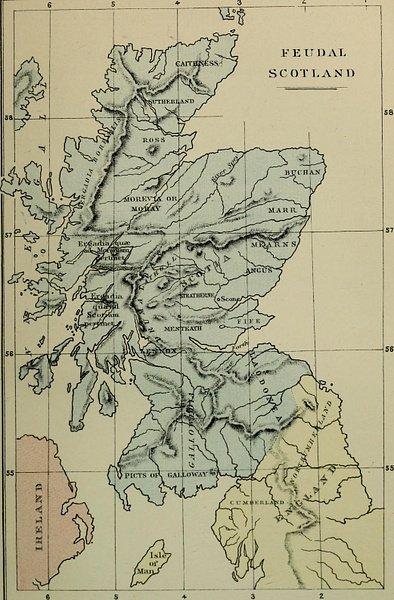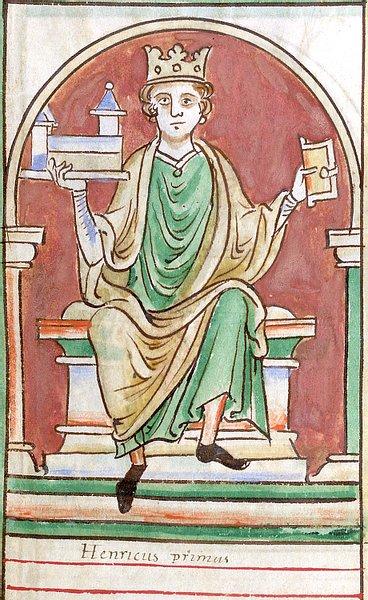Alexander I of Scotland reigned from 1107 to 1124 CE. Alexander continued the reorganisation of the Scottish Church, taking the Roman Catholic Church organisation as a model, and he famously founded the priory at Scone, site of the acclamation of Scottish kings, which later became Scone Abbey. The king strengthened the peaceful relationship with England by marrying a daughter of Henry I of England (r. 1100-1135 CE). His reign saw Scotland's first coinage and a certain modernisation in local government. Alexander died in 1124 CE and was succeeded by his brother David I of Scotland (r. 1124-1153 CE) who continued his predecessor's policies to create a more unified kingdom.
Early Life
Alexander was born c. 1077 CE, a member of the House of Canmore. His father was Malcolm III of Scotland (r. 1058-1093 CE) and his English mother was Queen Margaret (c. 1046-1093 CE), later to become better known as Saint Margaret of Scotland. Malcolm III had married his second wife Margaret, a Saxon princess, in 1070 CE after she had sought refuge in Scotland from the Norman Conquest of England. Margaret brought certain aspects of English culture to the Scottish court and promoted Roman Catholicism over the Gaelic Christianity that had previously been prevalent. When both Malcolm and Margaret died in 1093 CE, there was a reaction against this Anglicisation, and the royal princes and princesses, including Alexander, were obliged to leave Scotland and find safety in northern England.
Malcolm III's younger brother Donald took the throne as Donald III of Scotland (r. 1093-1097 CE). Donald's reign was interrupted briefly by his nephew Duncan (the son of Malcolm and his first wife Ingibiorg) in 1094 CE. Donald regained the throne, but it was only a brief respite as Alexander's elder brother Edgar returned to Scotland and seized the throne in 1097 CE. Edgar made his brother Alexander the Earl of Gowrie. When Edgar died aged just 33 and without any children in January 1107 CE, Alexander became king as Alexander I of Scotland. The new king followed the wishes of his brother and allowed his other brother David to govern the lowlands of Scotland (Lothian, Teviotdale, and southern Strathclyde) while he ruled the rest of the kingdom. Alexander had tried to deny David these lands but his brother had become a particular favourite of Henry I of England and so the Scottish king may have acted out of fear of English reprisals rather than brotherly love. Alexander's ruthless streak revealed itself in 1107 CE with his decision to execute Donald III, who had been languishing in a prison cell for the last ten years.
Modernising Scotland
Alexander set himself the challenging task of modernising his medieval kingdom, one which had changed little in the previous centuries. Coins were introduced, or more precisely, the oldest surviving Scottish coins date to Alexander's reign. The king created new offices, which already existed in England; these were the chancellor, constables, and sheriffs who helped implement Alexander's will throughout the kingdom.

Alexander continued the policies of his mother Queen Margaret and took a great interest in church affairs. He invited more priests from northern England to help modernise the Scottish Church and laid the foundations for dividing Scotland into dioceses, each led by a bishop as in the Roman Catholic church administrative system seen in other European countries. Alexander also appointed the Benedictine monk Turgot of Durham (c. 1050-1115 CE) - once private chaplain to Queen Margaret - as the bishop of St. Andrew's and so the head of the Scottish Church. When Turgot died in 1115 CE, the ties with England continued with his successor Eadmer of Canterbury (c. 1060 - c. 1126 CE). However, Alexander was determined to keep the Scottish Church independent, and he actively resisted attempts by the archbishops of York and Canterbury to directly interfere in the ecclesiastical affairs of his kingdom. This sentiment of independence is recorded in letters written by the king to the Papacy in Rome.
There was resistance to these modernisation policies, notably from the northern part of his realm. The much more traditional Celtic peoples in Mearns and Moray were forcibly pushed back even further north into the Ross region, and the king there became known as 'Alexander the Fierce' or 'the Strong' according to medieval chronicles. This is a more likely origin of his nickname than his oft-cited reputation for chasing down and hanging thieves. The king was certainly a hands-on military leader, and he was known to wear Turkish armour and ride an Arab stallion.
It was probably as a thanks for the success of his campaigns in the north that Alexander founded the priory at Scone in Perthshire c. 1115 CE. Scone was the traditional place of coronation of Scottish kings and the location of the famous Stone of Scone (aka Stone of Destiny) which was a potent national symbol of Scottish nationhood. Alexander invited Augustinian canons from Nostel Abbey in Yorkshire to found the priory which later became a full abbey and itself the host of coronations. Nevertheless, Alexander's grip on his kingdom was far from absolutely secure as Scotland was still very much being formed as a single nation. As the chroniclers put it, "he held his kingdom with a great deal of effort" (Oram, 63).

Relations with England
The Scottish monarchs had finally settled matters with the Norsemen, a longtime presence in eastern Scotland. In 1098 CE King Edgar had made a peace treaty with Magnus 'Barefoot' which conceded the Western Isles. Meanwhile, relations with England were, for once, peaceful as in 1100 CE, Alexander's sister Edith had married Henry I of England and changed her name to Matilda. The alliance was further strengthened when Alexander acquiesced to become Henry's feudal vassal. Another link between the two monarchs was forged when Alexander married Sibylla, the illegitimate daughter of the English king. The Scottish medieval chronicles unflatteringly describe Sibylla as lacking in both looks and modesty. The relationship between the two countries went beyond mere diplomatic ties when Alexander personally led a Scottish army to assist Henry in his 1114 CE campaign in Wales.
Death & Successor
Alexander died on 23 April 1124 CE at Stirling Castle near the chapel he had founded; he was buried in Dunfermline. The king had an illegitimate son, Malcolm, and he did have some support, notably in the more strongly Gaelic parts of Scotland. Malcolm's claim for the throne was strengthened when he married the sister of Somerled, the lord of Argyll. Nevertheless, legitimacy remained a crucial requirement of monarchy and Alexander's younger brother David took over the throne as David I of Scotland in 1124 CE. The new king then quashed a serious rebellion in support of Malcolm in 1125 CE. The man who would be king did not give up, though, and another rebellion was launched in 1130 CE, this time with the support of Angus, the ruler of the Moray region and a descendant of Macbeth, King of Scotland (r. 1040-1057 CE). Once again, David crushed his challenger on the battlefield, Angus was killed, and four years later Malcolm was imprisoned in Roxburgh Castle. David went from strength to strength and forged a Scottish kingdom larger and more unified than ever before. The House of Canmore would continue to rule Scotland until the death of Alexander III of Scotland (r. 1249-1286 CE).
